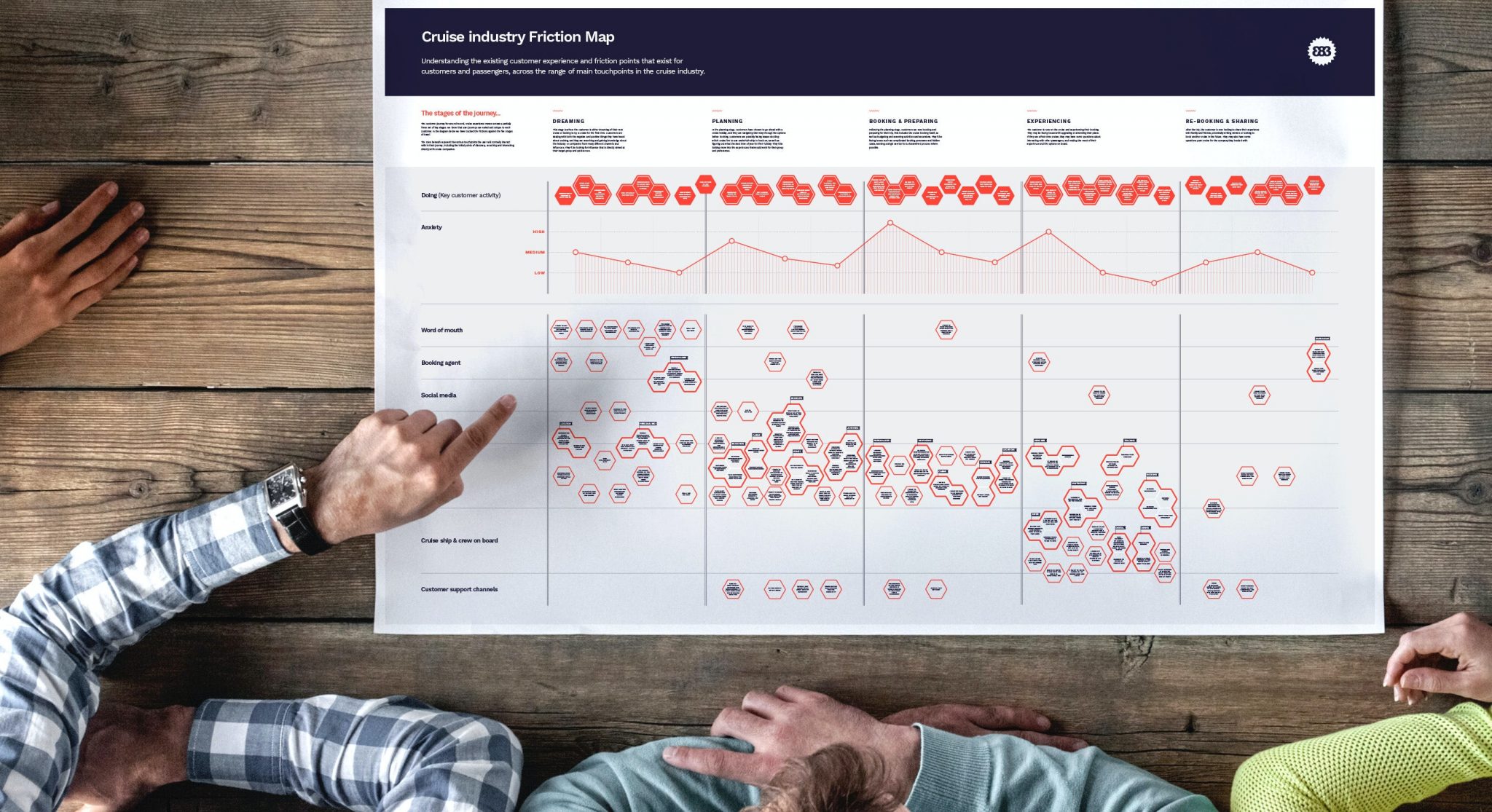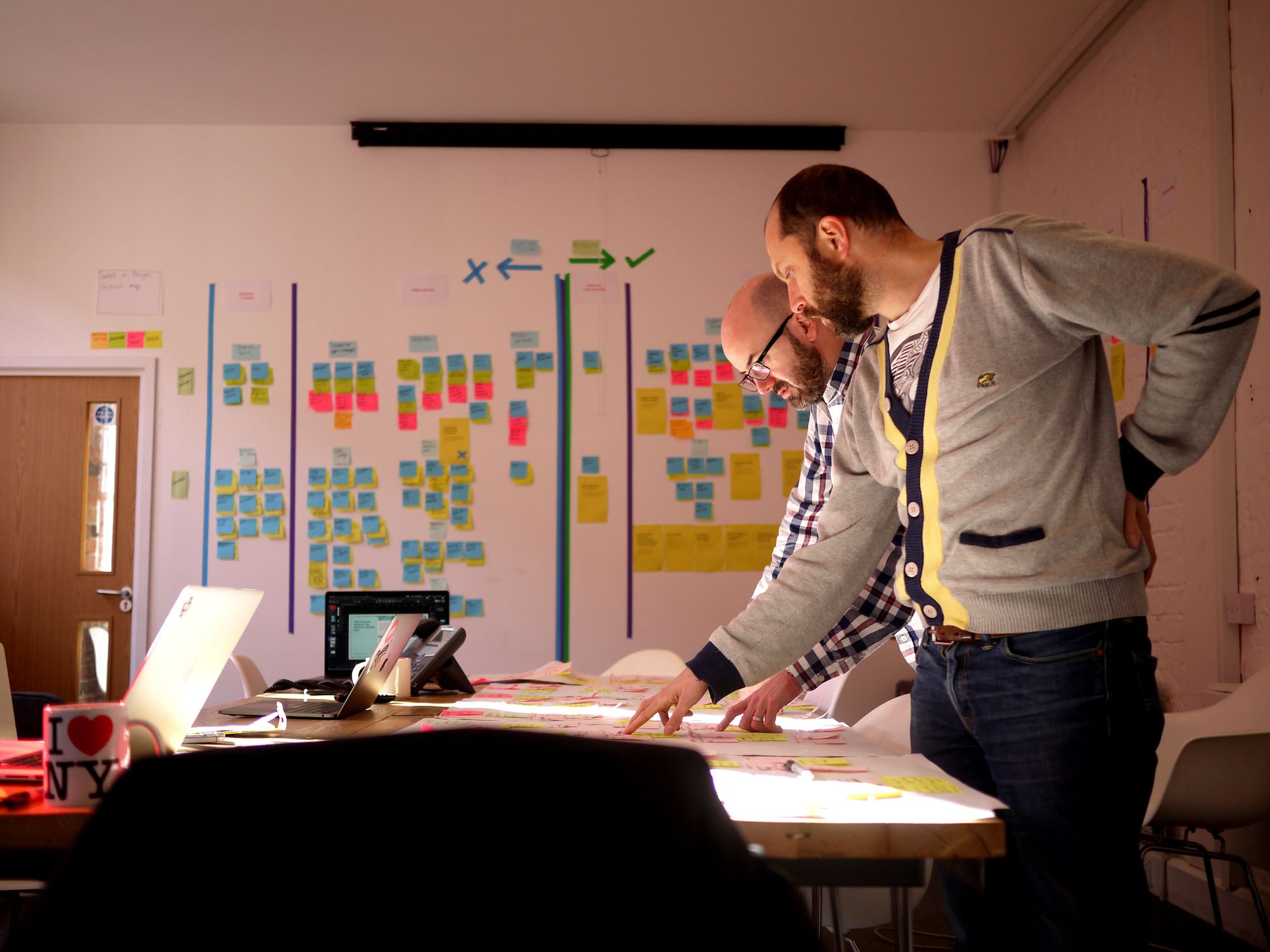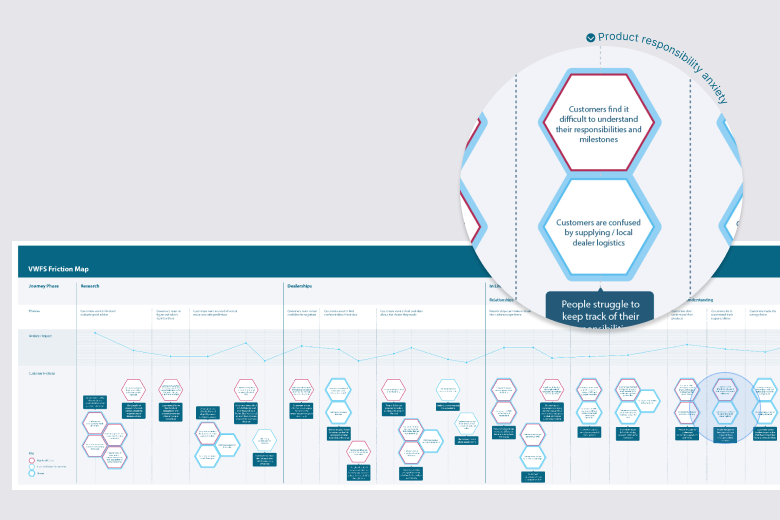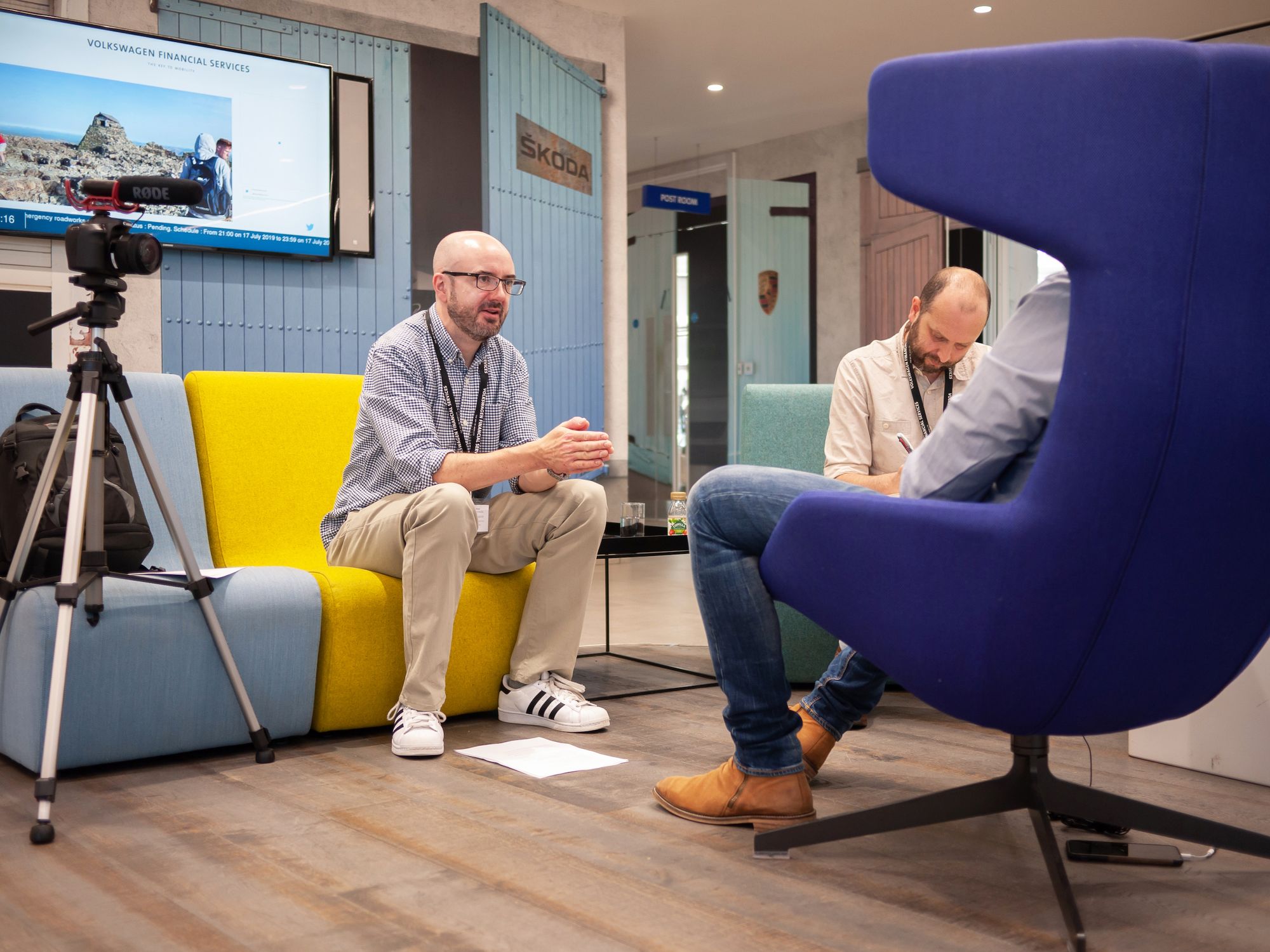The secret weapon for Conversion Rate Optimisation (CRO)
Read time: 5 minutes
Senior leaders don’t need more dashboards; they need fewer blind spots. Friction Mapping® is our registered methodology for uncovering where customer journeys quietly leak revenue, and fixing them in priority order.
It goes beyond traditional Conversion Rate Optimisation (CRO), which often focuses on tweaking the ‘what’ on a page. Instead, Friction Mapping® helps you understand the ‘why’ behind customer behaviour, aligning product, marketing, operations, and data teams around changes that directly move the commercial needle.
What is Friction Mapping®?
Friction Mapping® is the practice of pinpointing the exact moments where customers experience resistance (see our work with Worcester Bosch). That might be a slow-loading checkout page, inconsistent messaging between ads and landing pages, or an internal process that forces three support calls for a simple issue.
By connecting these moments into one coherent view, Friction Mapping® reveals the hidden blockers that stop customers from converting, repeating, or recommending.
The value for senior leaders is clarity. Instead of running on instinct or guesswork, you’re looking at a live blueprint of what matters in the customer journey, where the money flows, and where it leaks.

How does it work?
The process blends evidence, not assumption. A Friction Map combines:
- Funnel analytics and heatmaps
- Customer feedback, NPS comments, and review snippets
- Call centre logs and chat transcripts
- Employee insight workshops and operational SLAs
- Competitor benchmarking and market scanning
Each point of friction is plotted by effort (how hard it feels for the customer) and impact (how costly it is to the business). The output isn’t a wall of data; it’s a ranked list of 'must-fix' moments, giving you the fastest and biggest wins for CRO.
Instead of marketing chasing more leads, product shipping more features, and ops containing costs, you get a unified backlog tied directly to revenue.
The power of Friction Mapping®
What makes Friction Mapping® so powerful is the breadth of touchpoints it covers. It looks at both 'front of house' interactions (your website, app flows, checkout pages, service desks, chatbots, and physical experiences) and 'back of house' processes (order fulfilment, billing, returns, data handoffs between systems, and compliance hurdles).
By uniting these two worlds, you can see the organisation as a customer does: not as silos of marketing, product, or operations, but as one connected journey. The result is a true end-to-end blueprint in stage order, a map that highlights the obstacles, anxiety, moments of delight, shows who owns them, and reveals where to act first to unlock growth.

Why it beats “test-and-hope” CRO
Classic CRO can devolve into button-colour theatre. Friction Mapping® zooms out to the journey, not just the page. It exposes systemic issues (messy propositions, contradictory messages, tech inconsistencies) that A/B tests alone can’t diagnose. The win isn’t only a higher rate today, it’s a clearer operating model for continuous improvement tomorrow.
Friction Mapping® success stories across hospitality, SaaS, retail and automotive
These examples aren’t hypothetical. They’re real projects where 383 applied Friction Mapping® to uncover hidden blockers and unlock measurable results across hospitality, SaaS, retail, and automotive by bringing together data, research, and lived customer experience.
Global hotel group: Fixing the “last mile” of booking
The challenge: Mobile booking performance lagged behind desktop, with some customers abandoning partway through checkout.
The insight: Friction Mapping® highlighted three friction spikes:
- Room selectors used language that customers didn’t recognise.
- Rate names were inconsistent between marketing emails and the booking engine.
- The price changed late in the flow due to resort fees, destroying trust.
The change:
- Named rates in plain language matched to campaign copy.
- Introduced a transparent “all-in” price from step one, with fees explained upfront.
- Added a persistent progress bar and simplified the room picker for thumbs-on-mobile.
The result: Mobile conversion rates rose by double digits, “price shock” complaints dropped, and marketing spend became more efficient.
B2B SaaS: Onboarding that sells itself
The challenge: Trial-to-paid conversion was stalling, with prospects struggling to reach meaningful value quickly.
The insight: Friction Mapping® showed that time-to-value was blocked by IT permissions and slow data import, rather than on-page design tweaks.
The change: A synthetic data sandbox gave users instant product experience, onboarding checklists were re-ordered, and in-app concierge calls offered quick setup help.
The result: Trial activations rose sharply, trial-to-paid rates made a step change, and Sales cycles shortened.
👉 Read out Worcester Bosch Installer App case study

Premium retail: Checkout clarity beats coupon chaos
The challenge: Promotional peaks drove traffic, but checkout experience created unnecessary friction and unpredictability.
The insight: Friction Mapping® revealed mismatches between promo codes on PDPs and at checkout, plus unclear shipping thresholds.
The change: Promo logic was tightened, shipping nudges made visible in real time, and returning customers offered faster payment options.
The result: Abandonment fell, average order value increased, and promotions became more sustainable.
👉 Read our Glenmorangie e-commerce case study
Automotive services: Removing decision fatigue
The challenge: Finance application completions were lower than expected, despite strong starts.
The insight: Friction Mapping® uncovered concerns about credit score impact and customer confusion over too many similar finance options.
The change: Clearer messaging explained the “soft check,” finance plans were bundled into three plain-language options, and progress autosave was introduced.
The result: Application completions increased, mid-form drop-offs reduced, and satisfaction with chosen plans improved, leading to more referrals.
The leadership value: One truth, faster decisions
Friction Mapping® creates a single narrative from scattered evidence. Leaders are given a concise view of which frictions cost the most right now, what to fix, who owns it, and how to measure success.
It also de-risks experimentation. By tackling the highest-impact pains first, your CRO roadmap becomes a sequence of rational bets rather than random tests.
How to start (without a six-month odyssey)
- Define the golden path. Focus on the journey that matters most - first booking, first order, first repeat. Map only that.
- Aggregate the signals. Pull top-of-funnel analytics, funnel leaks, search terms, chat logs, call reasons, review snippets, and 5 to 10 quick user walkthroughs. Don’t wait for perfect data.
- Score effort vs. impact. For each friction point, estimate customer effort (time, confusion, risk) and commercial impact (how many, how often, how valuable). Rank ruthlessly.
- Design the minimum fix. Solve the friction with the smallest viable change first. If it works, scale and systemise.
- Instrument outcomes. Pair each fix with a metric and a time frame: conversion %, time to task, AOV, support contacts, repeat rate. Close the loop.
👉 Download our free Friction Mapping guide
What you’ll likely find...
- Language is your fastest lever. Customers don’t care about internal taxonomy. Align naming from ad to checkout to reduce cognitive load.
- Trust collapses late. Hidden fees, surprise steps, and login walls kill momentum. Put risks and costs where customers expect them, early.
- Ops and tech create invisible drag. Manual reviews, duplicate data entry, brittle promo rules; these are CRO killers that won’t show up in a split test until you look at the journey.
- Mobile is the truth. If it’s painful on a train, it’s painful. Optimise for thumbs, patchy signal, and split attention.
For senior leaders: Make it a habit, not a project
Run a monthly Friction Review. Bring one representative insight from product, marketing, CX, data, and engineering. Update the map, re-rank the backlog, and commit to two changes per cycle: one experience fix and one operational fix. Celebrate revenue won from friction removed; it builds a culture where teams chase clarity, not just campaigns.

FAQs
What is Friction Mapping®?
Friction Mapping® is a structured methodology for uncovering points of resistance in the customer journey. It highlights where customers face effort, confusion, or delay, and prioritises fixes that deliver the biggest commercial impact.
How does Friction Mapping® improve Conversion Rate Optimisation (CRO)?
Traditional CRO focuses on tweaking elements on a page. Friction Mapping® looks at the entire journey, exposing the ‘why’ behind customer behaviour. This provides a prioritised roadmap for changes that increase conversions and revenue.
Which industries benefit from Friction Mapping®?
Friction Mapping® has been applied across a wide variety of industries - hospitality, SaaS, retail, financial services, and automotive to name a few. The approach works for any business that relies on digital journeys to acquire, convert, or retain customers.
How is Friction Mapping® different from customer journey mapping?
Customer journey mapping visualises the end-to-end experience. Friction Mapping® goes deeper by diagnosing specific pain points, ranking them by impact, and turning them into a prioritised CRO backlog.
What outcomes can I expect from Friction Mapping®?
Businesses typically see improvements such as higher conversion rates, reduced drop-off, increased average order value, shorter sales cycles, and fewer support tickets.














